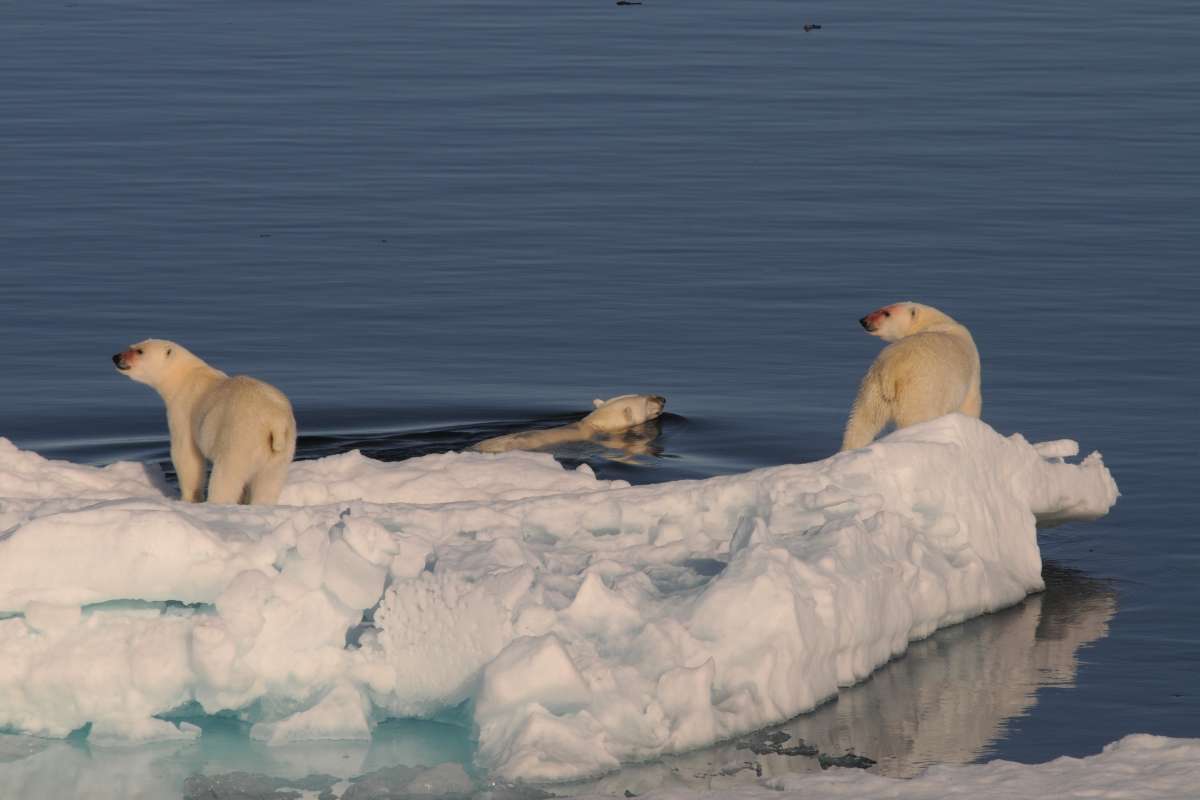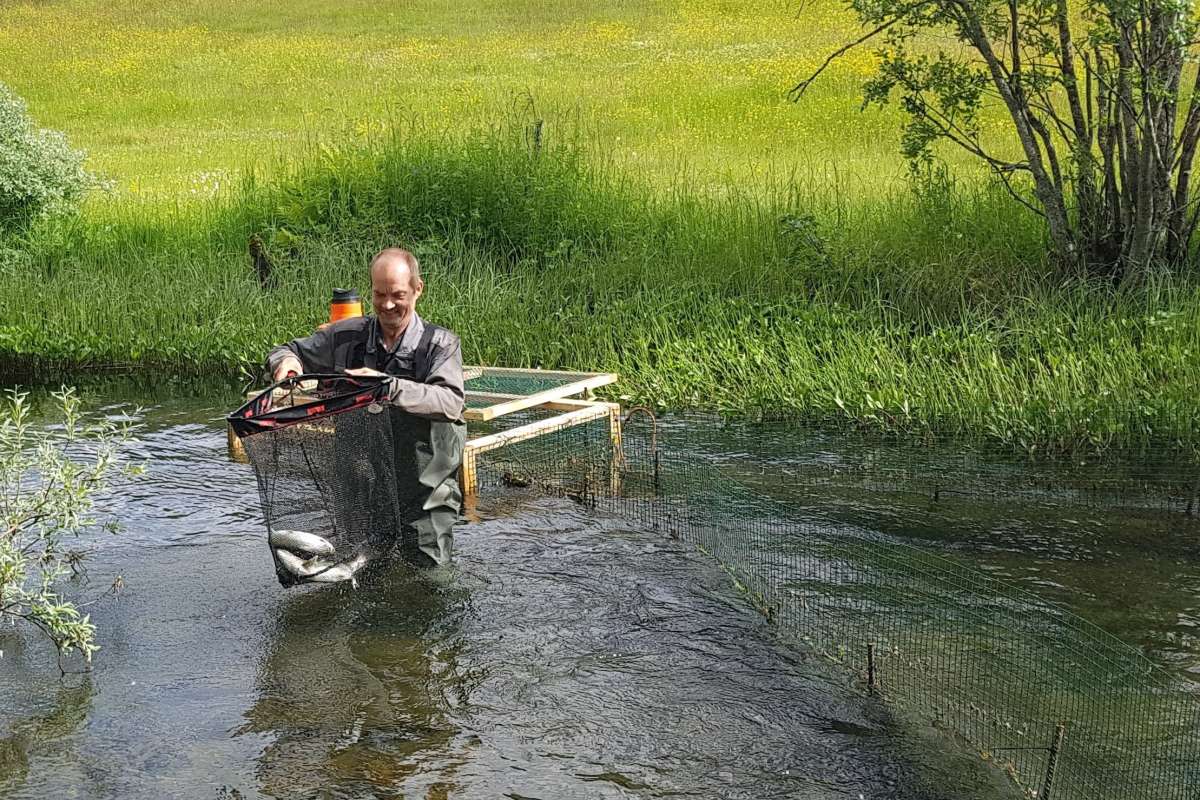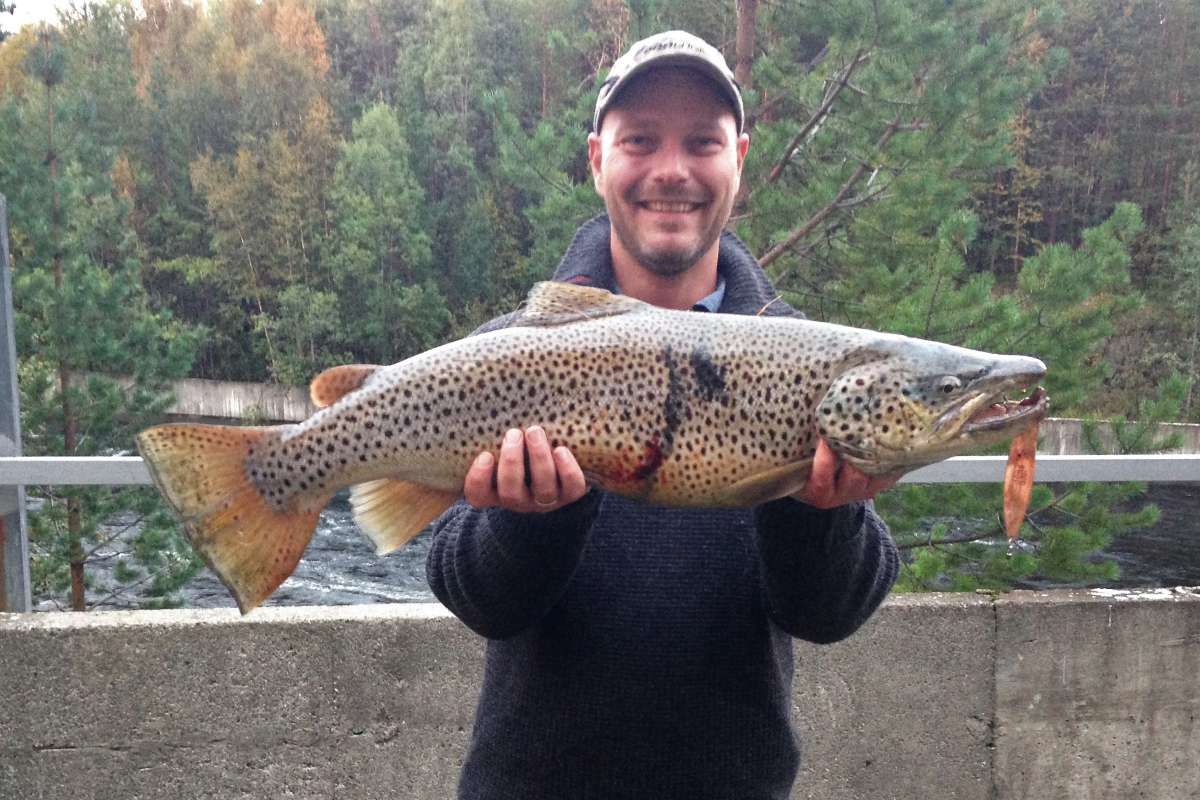Addressing the future of Norway 's pink salmon
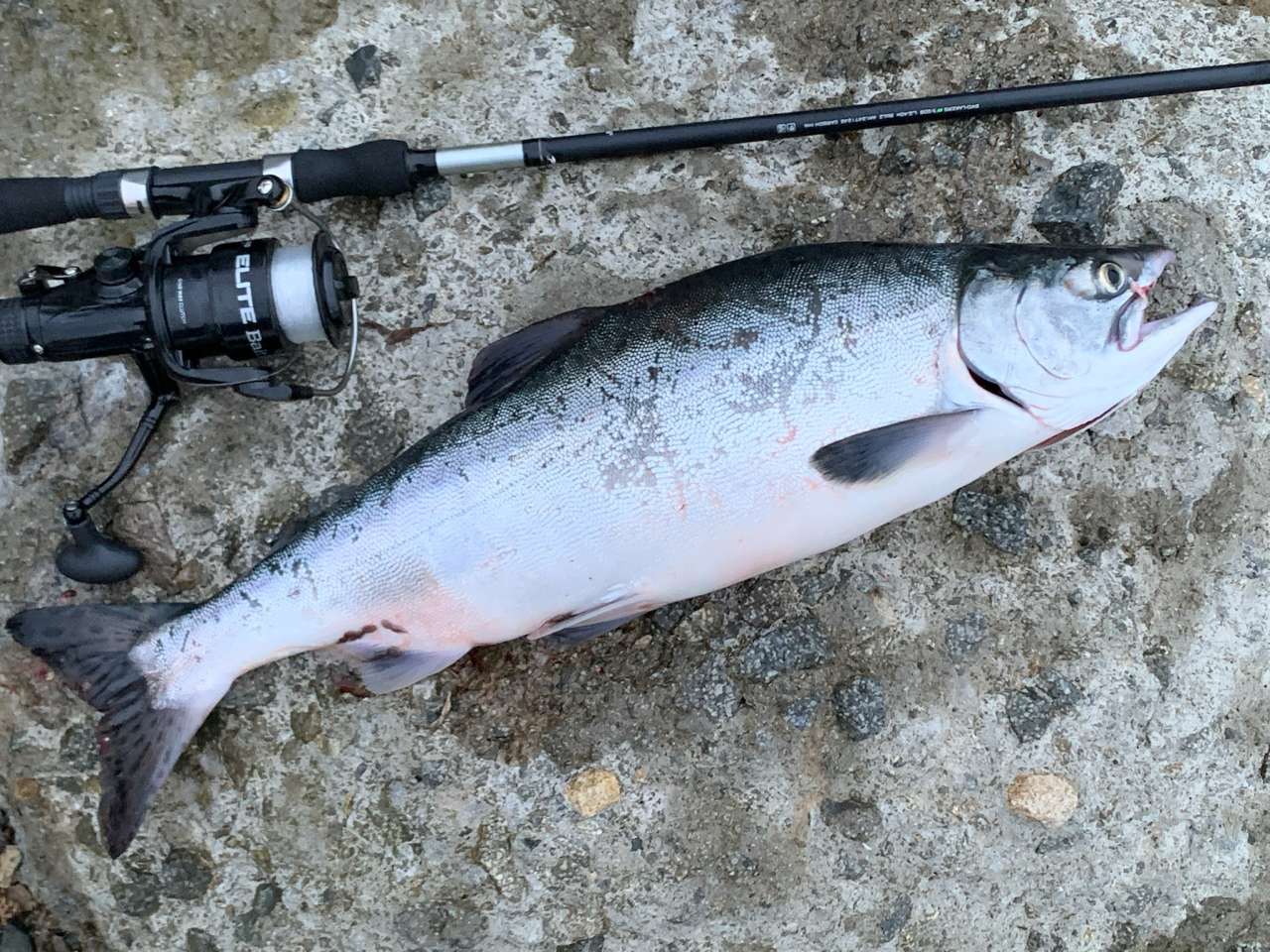
If caught in the ocean or immediately upon its return to the river, pink salmon makes for a tasty meal. Photo: alexzbg, CC BY-NC, via inaturalist.org
Recent projections indicate that pink salmon is likely to establish itself in many Norwegian rivers that are not yet occupied. Completely eradicating this non-native species from Norwegian rivers is highly unlikely. ”We need to find better ways to utilise this resource while at the same time protecting our native salmonids,” NIBIO-researcher says.
In recent years, the presence of pink salmon in Norwegian rivers has dramatically increased. Fishermen, anglers and researchers alike are concerned that this non-native species could pose a significant threat to native species and ecosystems. Moreover, the fact that pink salmon decomposes and ultimately dies during its spawning stage can lead to severe contamination of the rivers it inhabits.
Before it spawns, however, it makes for a tasty meal, which is why in Alaska, Canada, and Russia, pink salmon has long held economic significance. Caught in the sea or immediately upon its return to the river, it is considered a valuable food source.
"In its edible sea phase, it bears resemblance to the Atlantic salmon," says Dr Simo Maduna, a researcher at NIBIO Svanhovd. "It's only after it begins its journey upstream in the rivers that the spawning-ready fish turns a grey-brown colour, and the males develop their distinctive hump.”
Dr Maduna and colleagues recently published a study on Norwegian non-native pink salmon. With advanced modelling, they examined the river conditions in which the pink salmon thrives, and investigated what makes it spread to new areas.
"The main drivers affecting where pink salmon establishes itself seem to be temperature and precipitation. Additionally, pink salmon seems to favour areas of lower elevation," says the researcher.
The study suggests that the ecological condition in the rivers the researchers have identified as particularly suitable for pink salmon is likely to remain relatively stable for the next 30 years. Thus, Dr Maduna is doubtful that we can entirely eradicate pink salmon.
“We need to find long-term post-control measures as well as efficient ways to utilise the pink salmon as a resource,” he says.
"Alongside local interventions like traps and nets at river mouths, we should seriously consider using it as a food source. This approach could benefit both our environment and Norway’s Blue Economy.”.

Distribution modelling as a tool
The models used for the calculations are so-called species distribution models (SDMs). Ecological data, specifically weather and climate data, from rivers all over Norway where pink salmon occurs were used as input. River systems where pink salmon has not yet been detected were also taken into account.
Using advanced algorithms, the models were able to predict other rivers and areas with similar or better conditions that pink salmon can potentially spread to.
"The models help us understand and foresee where pink salmon may establish self-recruiting populations in the years to come. This is particularly useful in terms of where it may be necessary to implement proactive management measures that counteract establishment in highly suitable rivers that are not yet occupied," says Dr Maduna.
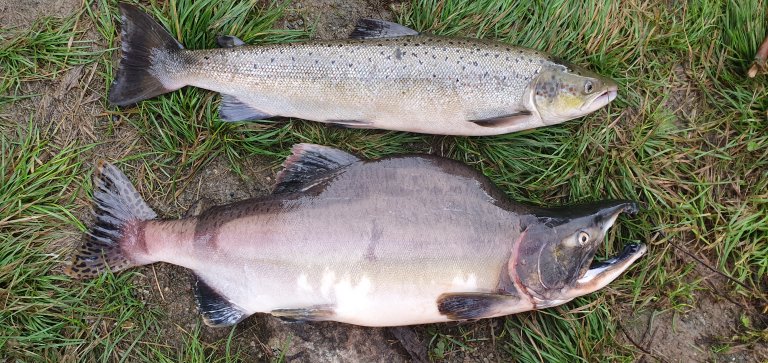
Northeast Norway – today’s hotspot for pink salmon
Dr Maduna found that northeastern Norway is the most important area for the spread of pink salmon, but that there are suitable rivers for the species throughout the country.
"Norway has many areas with optimal ecological conditions for pink salmon. Today, rivers in Eastern Finnmark are the 'hotspot' for the increase, i.e. where pink salmon has established itself well and spreads from. Our models indicate that we will likely see new hotspots elsewhere in the years to come.”
The models show suitable places for pink salmon outside Norway's borders too, including in the UK and Iceland where pink salmon has already been detected.
"Climate change can cause pink salmon to spread even further south in Europe too," Dr Maduna says.
"That being said, we must exercise caution before drawing definitive conclusions, as there may be other important factors that the models have yet to account for.”
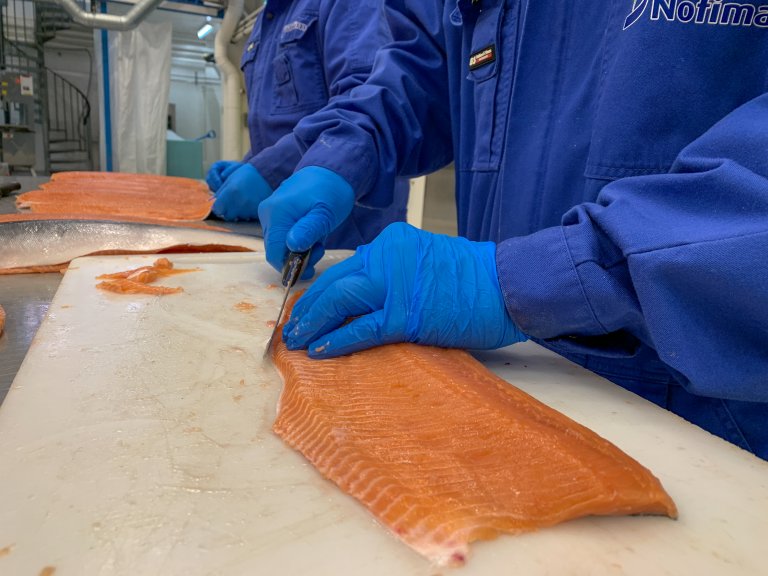
Genomics as a tool to understand the spread of pink salmon
In addition to finding out what kind of ecological and climatic conditions pink salmon thrives under, the researchers developed a new genetic approach to study the pink salmon in its non-native range, where all the fish are closely related compared to the fish in the native range. Through DNA analyses of pink salmon samples from 2019, they uncovered river-specific genetic patterns and directional gene flow, which indicated important rivers for pink salmon serving as a source of spread to other rivers in Norway.
The researchers now aim to integrate genomics into their distribution models for the species. This will help them determine the timing and sequence of spread events from current and future hotspots.
"The data we have collected can also be used in future studies to find out if the measures that have been implemented to contain pink salmon actually work as intended. It can also help us understand more about the species' life history and genetic characteristics in both introduced and native areas," says Dr Maduna.
The researcher is convinced that the ongoing research at NIBIO Svanhovd yields valuable insights for the management of pink salmon in Norway, and is grateful for the local support the team has received.
"Our research would not be possible without the help of the many dedicated people in Eastern Finnmark who support and contribute to our work," he says.
Contacts

Pink salmon (Oncorhynchus gorbuscha)
The pink salmon is a species of salmon originally from the Pacific Ocean. It was introduced to Russia in the 1950s and has since spread to Norway.
Pink salmon is now an established species in many Norwegian rivers, especially in Finnmark. It is classified as an alien invasive species and is blacklisted.
Pink salmon has a two-year life cycle and returns to its birth river to spawn every other year. Its presence in Norwegian rivers is particularly high in odd-numbered years.
In Norway, spawning is observed from mid-June to late July, with peak spawning in August and September. During the spawning period, males develop a distinctive hump on their backs. The colour changes from silver in the sea to olive green/brown in the rivers as spawning approaches.
The typical weight of a mature fish is about 2 kilograms, but it can grow up to 75 centimetres in length and weigh up to 6.5 kilograms.
To limit the spread of pink salmon in Norwegian rivers, measures such as fishing traps and nets are used. The timing of these measures is crucial to prevent both early and late spawning. There is also ongoing research to find the most effective measures to combat this invasive species.
Source: www.snl.no

Contacts

Publications
Abstract
No abstract has been registered

